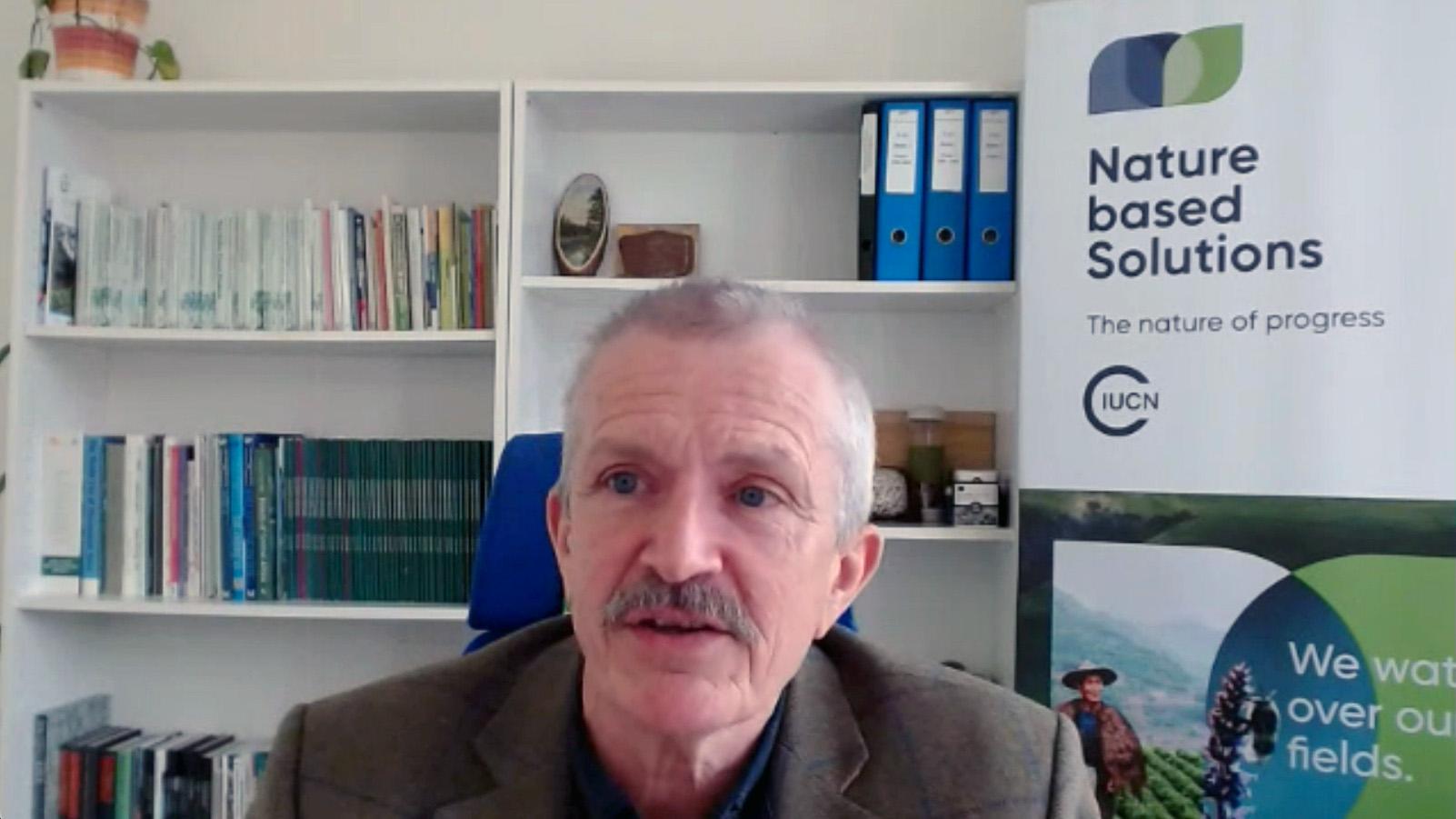This is a transcript of the speech that IUCN Deputy Director General, Stewart Maginnis, delivered at the UNEA Cities and Regions Summit on 23 February 2022.
It’s great to be here. I would like to begin with a big shout-out to UNEP for its leadership and commitment in organising this Cities Summit in the heart of UNEA.
I don’t think I need to convince many of you that cities are central to the success of the sustainable development agenda:
- It is in cities where well over half of the world’s population lives
- It is in cities where political power resides and financial capital concentrates;
- And, ultimately, it is in cities where, day-by-day, our collective future is being written.
For those in search of a better life, cities represent opportunity: the promise of greater freedom, tolerance, and equality; education and employment; innovation and excitement.
In my lifetime two great demographic trends have unfolded together – in 1963, two-thirds of the global population was rural and two-thirds lived in poverty. Even when we acknowledge all the usual caveats of causation and correlation there is little doubt that urbanisation and the processes associated with it have provided a pathway out of poverty for hundreds of millions – maybe even billions – of people. We should celebrate that.
Nevertheless, those development gains are not cost-free. The sheer speed and scale of urbanisation have created immense challenges – congestion, pollution, waste, unplanned development, overworked infrastructure, and strained service delivery. And that is before we factor in the uncertainty and elevated risks of climate change and the associated impacts of drought, heat stress, rising seas and storm surges, floods and landslides as witnessed in Petropolis just last week.
I’m sure my fellow panellists will agree that future-proofing our cities is now an imperative of the very highest order.
Fortuitously, nature is a strong and resilient ally in this endeavour.
- Trees mop up pollutants, dampen noise, and cool the air;
- Wetlands and rain gardens and, on the coasts, mangroves and marshes, buffer storms and sudden inundations, thereby reducing flood risks;
- National Parks and Forests in upper catchment store and clean cities’ drinking water;
- Greenways make low-cost exercise and by extension healthy lifestyles, accessible to many; and
- Greenspaces facilitate recreation and community interaction.
All these are all examples of Nature-based Solutions. In recent years, IUCN has worked to define and popularise the concept, not least by developing a Global Standard which we have begun implementing in cities.
And yet, I suspect that the full potential of Nature-based Solutions to the challenges of urban growth and development has barely been explored.
According to a recent study by the World Economic Forum, nature-based solutions are, on average, 50% more cost-effective than ‘grey’ alternatives and deliver 28% more added value, yet last year, they received just 0.3% of overall spending on urban infrastructure.[1]
We can and must do better.
That is why our Union—the International Union for Conservation of Nature—recently created a new membership category for subnational governments, paving the way for the voices of cities and regions not only to be heard by the conservation community but to actively help shape the future of conservation as a cornerstone of sustainable development.
And that is why we are now seeking to provide cities with expertise and tools to upscale NbS and integrate biodiversity effectively into their urban strategies, plans and actions.
I wish to conclude with three messages:
Firstly, this is urgent. The resilience of our global life-support system is being tested as never before. Make no mistake, a global climate and ecological emergency is with us, and every decision, every action, counts. We must act now, and we must act boldly.
Secondly, you have agency. Whether you’re an architect or engineer, a planner or designer, an investor or developer, a politician or practitioner, or just an ordinary citizen—you can make a valuable contribution in deploying Nature-based Solutions to help futureproof of your city. For example;
- Protect critical ecosystems from conversion to human settlements;
- Promote compact integrated development to curb urban sprawl;
- Adopt nature-inclusive design principles to accommodate wildlife;
- Deploy nature-based solutions to address pressing challenges;
- Enhance the efficiency of urban utilities to beat pollution;
- Green supply chains to shrink ecological footprints; and
- Foster pro-environmental attitudes grounded in ecological literacy.
And finally, whole-of-society transformative change demands radical new partnerships. That means getting out of our comfort zones, reaching beyond our sector; bridging divides and building coalitions. Indigenous peoples, youth and community groups, every sphere of government, businesses large and small – we all have common cause in addressing the challenges and the opportunities of 21st century urban-based society.
Ladies and gentlemen, it’s time to reimagine our cities as living, breathing, regenerative systems;
It’s time to build an ecological civilisation.
Thank you.
[1] World Economic Forum. (2022). BiodiverCities by 2030: Transforming Cities’ Relationship with Nature. Retrieved from https://www3.weforum.org/docs/WEF_BiodiverCities_by_2030_2022.pdf
